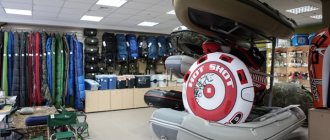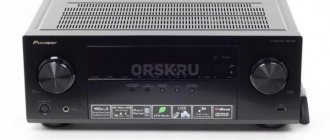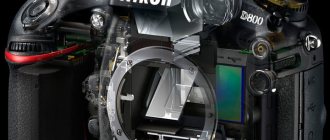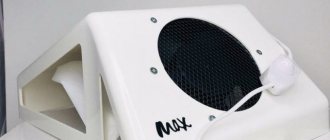Having found the constellation Ursa Major in the night sky, or by paying attention to the pattern of snow melting, an experienced traveler can easily determine the sides of the horizon. However, it is better for a novice tourist to abandon “amateur activities” and, postponing alternative methods of orienteering until better times, control the route using a compass.
It happens that, after glancing at the types of compasses presented, a beginner becomes confused and cannot choose the device for its intended purpose. But it’s stupid to acquire a gyroscopic device when going on a “quiet” hunt in a nearby forest or a one-day hike. In order not to regret a rash purchase, you need to study existing models and only then go shopping.
How to choose a compass
You can avoid trouble by having with you an ordinary compass, which acts as a guide and accurately determines north and south. However, this does not mean at all that the same device is suitable for wandering along forest paths and for a multi-day expedition. But more on that later. First, check out the criteria for the right compass:
- Durable, or better yet, shock-resistant housing made of metal or plastic.
- Protected from moisture.
- A principle accessible to everyone for determining the directions of the sides of the horizon: North, South, East, West.
- Dial with clearly visible divisions.
- The presence of large letters indicating directions.
- Compact and mobile.
- The electronic model must have a powerful battery. But don't waste time looking for a battery that lasts forever. As a rule, a fully charged battery runs out within three days.
What types of compasses are there?
Many modern devices operate on the principle of the oldest model, invented at the turn of the 12th – 13th centuries. Every year the compass is improved with structural changes. As a result, many devices appeared with one or another bias (geographical, children's, military, sports, etc.).
For a long time, magnetic or electronic types of compasses have remained undisputed favorites.
Magnetic
A magnetic compass is simple and easy to use. The advantage of magnetic models is independence. Simply put, their functionality is independent of the battery charge level. By interacting directly with the earth's magnetic field, the built-in magnetic elements are activated.
In a good compass, the capsule with the dial located inside is filled with a special solution that is resistant to temperature fluctuations. An air bubble in the liquid serves as an indicator of the orientation level. You should remember the factors that affect the accuracy of readings from a magnetic device:
- the presence of metal objects and structures;
- magnetic storms;
- an area with a high content of metal ore.
In order not to find yourself far from civilization with a demagnetized device, you need to conduct “reconnaissance.” Make sure that there are no metallic “obstacles” along the route. It is also important to take into account the phase of sun activity at the time of orientation. Now let's look at the main types of magnetic compasses.
Mechanical
The model is in particular demand among tourists. A magnetized metal needle with a red tip placed on a needle “looks” in the direction of the strongest magnetic field – north.
Using a mechanical device and a topographic map, you can determine the location of landmarks as accurately as possible.
For the military
It differs from the mechanical one by the presence of a magnifying lens, a ruler and a sighting device (front and rear sights), designed for better viewing of landmarks.
Tactical models are designed for precise orientation in field conditions. Main characteristics: metal body, high precision.
Geological
It is called mountain and is used to determine the azimuth of a route or the azimuth of a landmark. A specific device in which the dial is calibrated counterclockwise. The compass is equipped with a clinometer and a half-limb, allowing you to determine the angles of incidence of rock layers.
Gyroscopic
A device with a gyroscope at the base is used in aviation and navigation. Perhaps this is the most accurate compass, showing the geographic rather than the magnetic pole.
Gyroscope
The indicators of the gyroscopic device do not go astray even during swinging. Magnetic types of ship compasses are in demand no less than ARC in aviation.
Astronomical
Helps determine cardinal directions using stars or the moon. Even the accuracy of the readings does not put the compass in the selling group. This is due to the uselessness of the astronomical compass during the daytime.
For orienteering
The athlete must master the magnetic compass and learn to “read” a topographic map. Choosing a compass for orienteering is a painstaking process. Ideally, the device should meet the following requirements:
- the magnetic needle is installed in the shortest possible time;
- during jumping, running, cycling, the arrow “sits” like a glove;
- the device fits in your hand and does not slip out;
- compactness and light weight.
Earth's magnetic field
The Earth's magnetic field (often also called geomagnetic field - GMF) at each point in space is characterized by a strength vector T, the direction of which is determined by three components X, Y, Z (northern, eastern and vertical components) in a rectangular coordinate system (Fig. 1), or three elements of the Earth: the horizontal component of tension H, magnetic declination D (the angle between H and the plane of the geographic meridian) and magnetic inclination I (the angle between T and the horizon plane).
To study the spatial distribution of the main geomagnetic field, the values of H, D, I measured in different places are plotted on special maps (which are called magnetic maps of the Earth) and points of equal values of the elements are connected with lines. Such lines are called isodynamics, isogons, and isoclines, respectively.
Line (isocline) I = 0, i.e. The magnetic equator does not coincide with the geographic equator. With increasing latitude, the value of I increases to 90° at the magnetic poles. The total intensity T from the equator to the pole increases from 33.4 to 55.7 A/m (from 0.42 to 0.7 oe or from 42 to 70 μT).
The axis of the central dipole does not coincide with the axis of rotation of the Earth. The magnetic north pole is located in Greenland near the city of Thule (78° north latitude, 69° west longitude), and the south magnetic pole is located in Antarctica (78° north latitude, 249° west longitude).
Thus, the magnetic axis is tilted 12° to the Earth's rotation axis. It should be noted that the concepts of “north magnetic pole” and “northern magnetism”, like “south magnetic pole” and “southern magnetism” do not coincide.
The Earth's north magnetic pole includes the concept of southern magnetism, and the south magnetic pole includes the concept of north magnetism. The Earth's continental magnetic field has an average strength H of about 0.45 Oe.
Rice. 1. Components of the Earth's magnetic field.
However, there are areas of magnetic anomalies on the globe, where the magnetic field strength can exceed the average by 2-3 times. Typically, strong magnetic anomalies are associated with deposits of magnetite (FeO, Fe2O3) and gitanomagnetite (TiO2 impurities) ores, with deposits of other rocks enriched in magnetite, with some pyrroctyl (FeS) deposits.
Signs of such anomalies are Krivoy Rog, Kola anomalies, anomalies in the Urals, etc. The strongest anomaly on the globe is the anomaly in the area of Kursk and Belgorod, which is called the Kursk Magnetic Anomaly (KMA).
The KMA field strength (vertical component) here reaches 1.B...1.91 Oe (150...190 µT). This anomaly is explained by the presence of a large ore body under the Earth's surface. The most famous application of the phenomenon of terrestrial magnetism is the compass, invented in China more than 2000 years ago, which began to be used around the 12th century.
The operating principle of the compass is based on the interaction of the magnetic field of the compass's permanent magnets with the horizontal component of the Earth's magnetic field.
The simplest compass is a round box made of non-magnetic material, in the center of which there is a magnetic needle mounted on a sharp base (for example, on a needle).
A freely rotating magnetic needle rotates around its axis, positioned along the magnetic field lines. Thus, the arrow always points with one end in the direction of the North Magnetic Pole.
To determine azimuth, the compass must be in a strictly horizontal position. The accuracy of determining the direction (or azimuth) with a simple compass is 3...5p.
The accuracy of modern ship magnetic compasses in mid-latitudes and in the absence of rolling reaches 0.3...0.5°. The disadvantages of a magnetic compass include the need to amend its readings for the discrepancy between the magnetic and geographic meridians (correction for magnetic declination) and correction for deviation (rotation of the Earth).
Near the Earth’s magnetic poles and large magnetic anomalies, the accuracy of magnetic compass readings sharply decreases; in these areas it is necessary to use other types of navigation devices [1].
Due to the rapid development of micromagnetoelectronics, the so-called micromagnetoelectronics have recently become widespread. electronic compasses. Electronic compasses have many advantages over traditional (arrow) compasses.
They are vibration- and shock-resistant; in addition, the designs of modern compasses include: the ability to enter the user’s location, set magnetic declination, automatic compensation when exposed to external fields, set a route and record it, direct interface with an electronic navigation system, etc.
Rice. 2. Decomposition of the Earth's magnetic field vector into components.
The accuracy of determining azimuth with an electronic compass can reach 0.1°. In such devices, the role of a “magnetic needle” is played by a magnetic field converter.
Electronic compasses
Modern compasses, operating on the basis of magnetized sensors, are distinguished by high accuracy and a variety of functions. In addition to accurately determining coordinates (using satellite systems), it can “remember” data on the length of the route and the path it takes.
It is especially convenient to save the selected point on the terrain where, say, a camp is set up, and continue on your way. Both outdoor enthusiasts and professionals: military personnel, representatives of law enforcement agencies remain permanent consumers of electronic compasses.
Attention! When choosing an electronic device, you should keep in mind that the battery is discharged within 3 days. Therefore, when going on a long walking expedition, it is better to acquire a magnetic compass.
Now let's look at the main types of electronic compasses.
Radio compass (ARC)
An automatic on-board radio direction finder, used for navigation of aircraft during flight. Indicates the direction of an object emitting radio waves. Having tuned to the carrier frequency, the device automatically displays the necessary data. Regardless of weather conditions and time of day, it copes with the following tasks:
- ensures the correct course to follow;
- determines where the radio station is located;
- performs the functions of a backup radio receiver.
Travel electronic compass
The best hiking option, showing accurate time and performing a lot of additional tasks. But only for a short tourist walk. It does not have a magnetized needle, which makes it different from its magnetic “colleague”. Determines the sides of the horizon using electronic circuits.
GPS and Glonass
Satellites transmit signals that are picked up by an electronic system. Navigators recognize information and accurately determine the required coordinates.
Unlike magnetic ones, they can estimate real coordinates in conditions of poor visibility and without noticeable landmarks. When avoiding an obstacle with GPS device, you just need to adjust it along the changed route line and the desired direction will be set.
Can a GPS receiver replace a compass?
GPS receiver has high navigation characteristics and often has a built-in electronic device. However, despite all its functionality, the navigator becomes useless if the battery is dead.
The conclusion suggests itself: when going on an expedition or hike, it is better to take a trouble-free magnetic compass with you. But you can also grab a set of backup batteries. However, during a long walking expedition, this measure will not solve the problem.
Block diagram of an electronic compass
In recent years, quite a lot of models of electronic compasses produced by foreign manufacturers have appeared on the domestic market. These models have different characteristics, different sets of functions and different design. The cost of such devices ranges from 20 to 1000 USD.
Rice. 3. A possible structural diagram of an electronic compass.
Depending on the purpose, the structural and electrical circuits of electronic compasses can be very diverse. However, they all contain some common nodes and blocks.
A possible version of the block diagram of the electronic compass is shown in Fig. 3. The block diagram of the electronic compass contains the following main components and blocks:
- Two channels for measuring EMF voltage along the X and Y axes
- Channel for determining the angle of inclination of the device.
- Microprocessor
- User location input block.
- Memory block.
- Interface,
- Graphic and (or) digital indicators.
- Stabilized power supply.
Electromagnetic
A device with straps for wearing on the hand is difficult to classify as a frequently purchased device. The device is made as a magnetic device, but with one significant difference: the measurement of the position of the arrow is carried out by electronic components. Then, the converted data appears on the screen.
The electromagnetic model is good for mushroom picking, fishing or hunting. It is enough to put the device on your hand and monitor the screen indicators.
Attention! Since the functionality of the device depends on the battery charge, it is not suitable for long hikes.
Liquid
The configuration is the same as the classic magnetic version. This is a sealed, sealed flask with an arrow, filled with a non-freezing solution. Thanks to the anti-freeze resistance, the needle calms down in just a couple of seconds.
The indicator practically does not respond to vibration and other influences. There is no need to buy a liquid device for a walk along park alleys. Its main purpose is orienteering competitions. Easy to use, precise and fast, it saves every second. But this is the most valuable thing on the path to victory.
Types of compasses
Modern models are divided into 3 types. Each has its own pros and cons. Depending on the purpose of use, it will not be difficult to make a choice:
- Liquid. These are simple and accurate devices. A coil with a ferromagnetic needle is installed in the container on top of the liquid. The coil is made of copper or aluminum. There are also two magnets placed inside that create a magnetic field. To determine your location, you only need to rotate the compass horizontally. Such devices have high accuracy of readings due to the liquid, which additionally stabilizes the needle. The advantages of this type include compactness, low price, measurement accuracy, and ease of use. The disadvantage is that the reservoirs of liquid compasses are made of glass; they do not withstand shock or strong shaking. Therefore, such devices should be handled with extreme care.
- Magnetic. Everyone remembers such devices from school. Inside the box there is a dial and a hand. Its red end always points north. With this in mind, determining your location is not at all difficult. A serious disadvantage of this type is that under the influence of strong magnetic fields the device gives distorted readings. There is a simple way to check accuracy. You will need a metal object, such as scissors. They must be brought to the compass and wait until the arrow deviates. After the metal object is removed, the arrow should quickly return to its previous position. Otherwise the device is faulty. But a magnetic compass has many advantages. Among them are size, convenience, low cost and ease of operation.
- Electronic. These are improved models that have a liquid crystal display instead of a dial with an arrow. They usually have a backlight. Particularly advanced models are equipped with a GPS navigator and a battery. The battery charge lasts up to 6 days. The downside is that it requires recharging the battery. In addition, this miracle of technology is not cheap compared to other types. But this compass accurately determines coordinates, it is easy to use and compact. Thanks to the presence of a navigator, the device is more functional.
Varieties of executions
When wondering which of the proposed compasses is better, don’t even expect to get an instant answer. And there is no need to hastily accuse the seller of incompetence. He can't read minds. First, decide under what conditions the device will be used and set a price barrier.
Attention! Don't buy a device based solely on its design. It is important to pay attention to its design features.
For example, tiny, weightless children's compasses are not highly accurate. It is unlikely that such a model will be suitable for conquering a new route far from civilization.
On the contrary, a multifunctional device designed to solve the most important specific tasks will turn out to be useless while walking along park alleys.
Orientation arrow
Before setting out on a route, experienced travelers calculate the direction from the map and determine the angle of deviation of the azimuth from the magnetic meridian. The data is stored using an additional arrow. Throughout the journey, she “looks” in the direction of the point of arrival. With the guidance arrow, planning your route becomes child's play.
Optical lenses
Magnifying glasses mounted on a substrate are an indispensable companion to tablet devices. With their help, it is much easier to see small symbols indicated on the topographic map.
Fluorescent markings
The luminous tip of the arrow and the symbols on the scale significantly simplify the process of orientation in poor visibility conditions: at night, in fog, in a downpour, etc. In hiking conditions, especially with heavy precipitation, this is a very valuable property.
Clinometer
A device provided for engineering instruments that allows you to determine the angle of inclination of a slope and design upcoming operations: construction, earthworks (optionally, the construction of dam-type storage facilities). During the conquest of mountain peaks, it will allow you to assess the degree of danger of an avalanche.
Sighting mirror
When going into the forest, it is better to have with you a device with a small folding mirror with a through hole. Through the device installed in the initial position, it is especially convenient to view the direction of travel and a landmark located in a straight line. This significantly speeds up the movement of the tourist group. In addition, the mirror is suitable for sending an SOS signal if you suddenly need help from rescuers.
Global arrow
The function will be appreciated by explorers of the Southern Hemisphere. A needle designed to rotate freely in North America may fail in other parts of the world. This is due to deviations in the earth's magnetic fields. A compass equipped with a global needle is equally functional everywhere.
Strap
Essentially, a piece of cord that allows you to wear the device on your belt, backpack or wrist. Simplifies the orientation process.
How the digital compass works
Due to the widespread use of the Android mobile platform and GPS chips in final products in particular, I became interested in the idea of working a digital compass, around which so many questions now arise. So, the object we are considering is a compass, which is based on the principle of construction on determining coordinates using satellite navigation systems. However, in practice there are cases when the compass contains a block of magnetoresistors (the principle of changing resistance depending on the position of an object in absolute space) or Hall elements as a receiver. Hall elements are built on the basis of micromechanical systems that are highly sensitive to changes in the magnetic field in the specific case of a change in the distribution of charges on a silicon wafer under the influence of the Earth's magnetic field. Devices based on magnetoresistors and Hall elements represent a compass in its classic form, as an autonomous measuring instrument, in contrast to “collective” type systems, the input information for which comes directly in the form of a satellite signal. As a result, systems based on an external source of information are essentially devices with a heading angle indication in the form of a compass.
Since in practice we most often deal with determining location and direction through navigation systems, an example of this is Android with its google maps application, the following is the principle of operation of the algorithm for just such a use case: 1. Based on signals from satellites, we take readings of the coordinates of the receiver satellite navigation system (and, accordingly, the object) 2. We note the moment in time at which the coordinates were determined. 3. We wait for a certain period of time, short enough for better results. 4. The location of the object is re-determined. 5. The simplest navigation problem of calculating the movement speed vector from the obtained coordinates of two points and the size of the time interval is solved, after which, knowing the vector, we easily obtain: a) direction of movement b) speed of movement 6. Go to step 2.
As we can see, the operation of the algorithm is ensured cyclically and the starting point for the beginning of the next vector will be the end of the guide vector for the last time interval. The disadvantages of this method in the use of digital compassing: if the object is motionless in absolute space, the direction of movement cannot be determined; the coordinate fixation points coincide in this case. As an exception, there are quite large objects (for example, large sea vessels), where it is possible to install 2 receivers (for example, at the bow and stern). Thus, the coordinates of two points can be obtained immediately, even if the object is stationary, and go to step 5. It is also necessary to take into account the accuracy of determining coordinates by satellite positioning systems and its effect on slow-moving objects, due to the spread of location errors.
What to look for when choosing?
It is not enough to know what types of compasses there are. The main thing is to be able to identify a truly suitable device. Tips from experienced travelers will help you figure it out:
- A classic device with a ruler and degree division is suitable for hiking. Using a degree dial and a ruler, experienced tourists make degree and azimuth calculations.
- GPS navigator - an option for a cyclist. Attention! It requires regular recharging, which means that when going on a bike tour you need to take a backup, classic compass with you.
Electronic navigators are suitable for aviators. Multifunctional devices will allow you to monitor altitude and pressure indicators.
How to choose a convenient model
How to choose a compass that lasts forever? Similar questions are asked by people who have recently embarked on the path of tourism. Experienced travelers do not rely on "maybe". Before setting out on a route, they think through all the actions that may arise in force majeure situations.
For example, a car moving through snowy expanses broke down, and the battery of an electronic device was hopelessly discharged. If you find yourself in such a situation and have no experience in alternative methods of orientation, you can get completely and irrevocably lost.
But the trouble will seem trivial if you have a spare emergency kit at hand, consisting of detailed maps of the area and a magnetic compass that does not depend on energy sources.
Cars and motorcycles
To make a motorcycle rally or a car trip to new places, you can pay attention to an electronic device. This ensures the most accurate data possible. At the same time, the compass will not react to metal parts of the vehicle. This means that its functionality will not decrease.
Some people will be confused by the fact that the device requires regular charging. This is a problem when traveling on foot. But, using the energy of a running car, you can charge the device whenever you want. This means that the fears are unfounded.
Cyclists
As a rule, cyclists ride not far from “civilization.” The best option would be a liquid type device. By hooking it on your wrist or hanging it on a neck cord, you can control your location without being distracted from the movement. When planning a bike ride to a neighboring city, it is better to take a backup electronic compass.
Hiking
The simplest magnetic compass will become a worthy companion while hiking in a nearby park. For walks with your child, purchase a children's wrist model and teach the younger generation navigation skills in the form of a game.
Sport
Orienteering requires special equipment. The best option is a liquid device. High-precision readings, speed, convenience are its main characteristics.
Note! Organizers of orienteering competitions prohibit the use of electronic devices.
Recommendations for proper use
Like other navigation devices, the compass may be defective. Therefore, without leaving the counter, you need to make sure that the device is working properly. First, rotate and shake the body thoroughly. Then pay attention to the speed at which the needle returns. If the search for North and South takes too long, the device is no longer suitable.
It is not enough to know what types of compasses there are. It is much more important to choose the right model and master the science of orienteering.
Before you go on a hike, you need to study the attached instructions from cover to cover. Further actions:
- calibrate;
- practice determining your coordinates on familiar terrain;
- if we are talking about an electronic model, take care of spare batteries.
When considering an electronic device, you need to pay attention to the type of screen. The touch display absorbs more energy, which is important to take into account when planning a route and determining the duration of the trip.
Important information! When a magnetic model is used for a long time, some of its parts become deformed. The possibility of erroneous readings can be eliminated by regularly checking the operation of the device.
Devices worthy of attention
Modern compasses do most of the work themselves. The traveler just has to follow the instructions exactly. Among the many existing models, the leaders are:
CAMMENGA MODEL 27CS OLIVE DRAB LENSATIC
Ultra-precise and reliable device. Withstands any temperature and climatic anomalies. “Unkillable” titanium case, coated with phosphor paint.
At night, just shine it on it for 30 seconds and use it.
POCKET TRANSIT 0-З60 DEGREE
“Clad” in a cast aluminum housing, the device is resistant to mechanical stress and temperature fluctuations. The silicon lock reliably protects against moisture.
This allows you to use the device when crossing water bodies. The needle moves smoothly and is quickly installed on the magnetic server.
With lid (folding)
A compass with a lid on the screen will last longer. Plastic or metal will protect fragile plexiglass from scratches and other damage. Let's consider 2 models: camping and gift.
Coghlans 8048
pros
- simple
- titanium case
- works flawlessly
- can be hung
Minuses
- scale in 50 increments
From 486 ₽
A convenient device in a durable round titanium case will not break if dropped. The dial is painted with fluorescent paints, and the screen is coated with an anti-reflective compound. The functions of a mirror are performed by the internal polished surface of the lid.
“Tasman” ICT-12
pros
- design
- engraving
- removable cover
- compact size
Minuses
- non-waterproof
From 1,460 ₽
This compass looks good as a gift for an avid traveler. Its brass body has a bronze cast, and engravings inside and outside add solidity. The device fits in a pocket (diameter 6 cm), but it must be protected from getting wet.











